#queer Britain museum
Explore tagged Tumblr posts
Text


It was pounding with torrential rain Sunday afternoon, but that didn’t stop Pal and I from making a religious pilgrimage to genuflect before THIS sacred artefact – the bright orange “octopus” dress worn onstage by drag terrorist Divine (1945-1988) when John Waters’ “hog princess” leading lady toured the United Kingdom’s dive bars and fleshpots in the 1980s! Divine’s dress is in the permanent collection of the Queer Britain museum in Kings Cross. Pictured: Pal wearing his Divine t-shirt in tribute!
#divine#drag queen#drag icon#drag terrorist#drag monster#john waters#lobotomy room#freak diva#hog princess#cult cinema#queer#punk#lgbtquia#queer Britain museum
24 notes
·
View notes
Text



details of paintings by john singer sargent: sargent & fashion exhibit at the tate britain in london
Mrs Robert Harrison (Helen Smith), 1886; The Honourable Pauline Astor, 1898-9; In a Garden, Corfu, 1909
#john singer sargent#sargent#art#painting#paintings#american painter#fashion#19th century art#19th century painting#early 20th century#20th century#20th century art#edwardian#london#portrait#portrait painting#queer art history#art history#european art#realism#isabella stewart gardner museum#boston museum of fine arts#tate britain#my photos
24 notes
·
View notes
Text
Runtime as shown on Spotify: 37:24 (including advertisement).
Description provided by We Are Queer AF:
Rehangs at art museums are rare. The last one at Tate Britain was in 2012. Whilst galleries will make small changes to their on-display collections, these are small, only happen every few months and usually happen for specific reasons (such as an item going on loan to another gallery).
But each rehang gives an art gallery to make a statement on what its mission as an institution is. A statement that visitors will likely see for ten or more years. So it's a big deal that Tate Britain and the National Gallery both increased the amount of LGBTQIA+ representation in their recent rehangs. This week's producer, Mills Dyer explores some key Trans+ history they reveal, with guests:
Abi Penton – A Tate tour guide and expert on Gluck
Cas Bradbeer - A queer historian and V&A Tour guide
Prof Matt Cook – Professor of Queer History at Oxford University
View the art discussed in today's show:
Flora’s Cloak c.1923, Gluck
Chevalier d'Eon by Thomas Stewart, after Jean-Laurent Mosnier
Prints of Chevalier d’Eon at the National Portrait Gallery
/end of description extract
#podcast episode#podcast#We Are Queer AF#art galleries#art museums#museums#curatorship#queer#LGBTQAI+#Tate Britain#The National Gallery#rehangs#art#history#art history#queer history#trans#trans history
1 note
·
View note
Text
Rare Language Learning: Polari
If you have ever used the words:
- Naff
- Butch
- Camp
You have unknowingly been speaking the sociolect known as Polari, the language of queer people primarily used in the 30s to the 70s. Polari is now an endangered language, as labelled by the University of Cambridge
Something of note: Many resources out there imply (or state) that Polari was a language invented and used solely by white cis gay men, which is decidedly untrue. Many words of Polari come from drag culture, lesbians, and the Romani people and their language. The use of ‘the language of British gay men’ may be a more palatable title to the general public, but it is not to me. I did my best to curate a variety of resources, but unfortunately much of queer history has been lost many more decades than I’ve been alive, if you have any other resources for studying Polari I would love to read them, message me or leave a link in the replies.
Articles
Learn Polari, the Secret Language of the Gays ⚢ Out Magazine
Polari: The code language gay men used to survive ⚢ BBC
Polari and the Hidden History of Gay Seafarers ⚢ National Museums Liverpool
The Story of Polari, Britain’s Secret Gay Language ⚢ Fabulosa!
Polari People ⚢ Fabulosa!
Polari: a language born from prejudice ⚢ Englishpanish
The secretive gay language that gave LGBTQ people a voice ⚢ GAYTIMES
A brief history of Polari: the curious after-life of the dead language for gay men ⚢ The Conversation
Study Material
The Polari Bible ⚢ Internet Archive
Fantabulosa: A Dictionary of Polari and Gay Slang ⚢ Internet Archive
Sociolinguistics / Polari ⚢ StudySmarter
FlashCards ⚢ Quizlet
New Polari Translator ⚢ LingoJam
Polari: A sociohistorical study of the life and decline of a secret language. ⚢ Dissertation, University of Manchester
Polari: a language born from prejudice ⚢ Englishpanish
Simon Bowkett: a short blog in Polari for LGBT+ History Month ⚢ Civil Service LGBT+ Network
#academia#studyblr#university studyblr#uni#university#student#linguistics#language study#language learning#langblr#languages#endangered languages#queer history#queer history month#lgbtq community#lgbtq history#lgbtq history month#lgbt#lgbt history month#queer academia#queer community#linguistic#Polari#Polari language#dialect#sociolect#pride#uk history#English history#university student
752 notes
·
View notes
Text
youtube
Recovering the Queer History of Britain's Navy in the Age of Sail by Seth Stein LeJacq for Royal Museums Greenwich
@rulebaetannia sent me this lecture because they thought I'd appreciate it. They were right.
#age of sail#naval history#maritime history#queer history#18th century#19th century#age of enlightenment#historical queerness#gay history#trans history#lgbtq history#lgbtq#gay#trans#queer#dare I tag some fandoms#the terror#black sails#ofmd#aubreyad#master and commander#Youtube
177 notes
·
View notes
Text
Recovering the Queer History of Britain’s Navy in the Age of Sail
If you missed this great talk from the Royal Museums Greenwich, the recording is available! From their YouTube channel:
What is the queer history of the Royal Navy in the age of sail? How did sailors break their society’s rules about sex and gender? Did they enter into same-sex relationships? Did they act in other ways that men ‘weren’t supposed to’ and what were the consequences? Is it possible to learn more about these sailors’ lives and why is it so important to do so? Dr Seth Stein LeJacq (New York Institute of Technology) investigates sexual cultures at sea, discipline and military justice. This includes a long string of naval sex scandals, beginning with the 1698 trial of Captain Edward Rigby.
More Maritime History and Culture Seminars
Dr Seth Stein LeJacq's website
youtube
271 notes
·
View notes
Note
Loved the Charles having a crisis at the beach post on your dash , but I have to ask …
What do you reckon is the most boomer thing Charles believes in ? 👀👻
(Ok second attempt bc tumblr decided to mess with me last time.)
I'm so happy to hear you liked it!! I don't usually like to post about my writing before I'm in the editing stage at least bc I don't like building expectations like that and making people wait. This time I hadn't even started writing (I was actually writing another, quite different fic that is almost ready to go up now). It was just an idea I had been rotating in my head for some time and I wanted to know if there were people who agreed with me. But everyone has been so lovely and enthusiastic and I can't wait to get it done and share with the class!
Now, for your question. Actually, no, first let me take this opportunity real quick to say:
I know what Gen X is, guys! I know Charles isn't actually a boomer, please stop yelling at me in the notes (please)!!!
Now, I was going to go into this whole spiel about how Charles is actually a really interesting case because he
seems to have had rather forward views when he was alive
unlike many of his peers, died before growing to adulthood in Thatcher Britain beat them out of him and left him a cynical husk of a person
So I actually like to think he is less behind than you'd expect from a guy who didn't live to see the iron curtain fall (see, just for some examples, his helping his classmate and unwavering support of other's queerness (though his reaction to Chad and Hunter in particular warrants a whole essay)).
And then after thinking all these thoughts I realised that pretty much everything we thought to know about dinosaurs in the 80's has since been overhauled. (Jurassic Park hadn't even been released yet!) And then I couldn't get this image out of my head of Charles scream-crying at a museum plaque (ineffectively since a) he is inperceptible, b) it is an inanimate object.)
So yeah, my answer is dinosaurs. I also firmly believe he checked out re the internet the moment they got rid of the dial up modem, if not earlier.
(All that said you should not think about the (lack) of sex ed this boy recieved and was probably never updated on)*
(*that last one might have been inspired by my own writing I'll admit)
But seriously, I am opening up the floor on this one, because now *I* wanna know what everybody thinks abt this. Thanks for the interesting question!!
#dbda#dbda headcanons#Charles Rowland#dead boy detectives#smule speaks#ask#writingsofophelia#also Pluto is a planet but we all know that#plz don't crash again tumblr I am sick don't do this to me
31 notes
·
View notes
Note
Hi, while looking through extant garments in a museum collection for reference for a school project, I found several garments of different designs that were all labelled as "binder" without any other context or explanation. Obviously my first thought was the kind of binder I use, especially for the first one that looks elasticated, but I have to assume they're for something else like gynecomastia or compression..? Do you know happen to know anything about them?
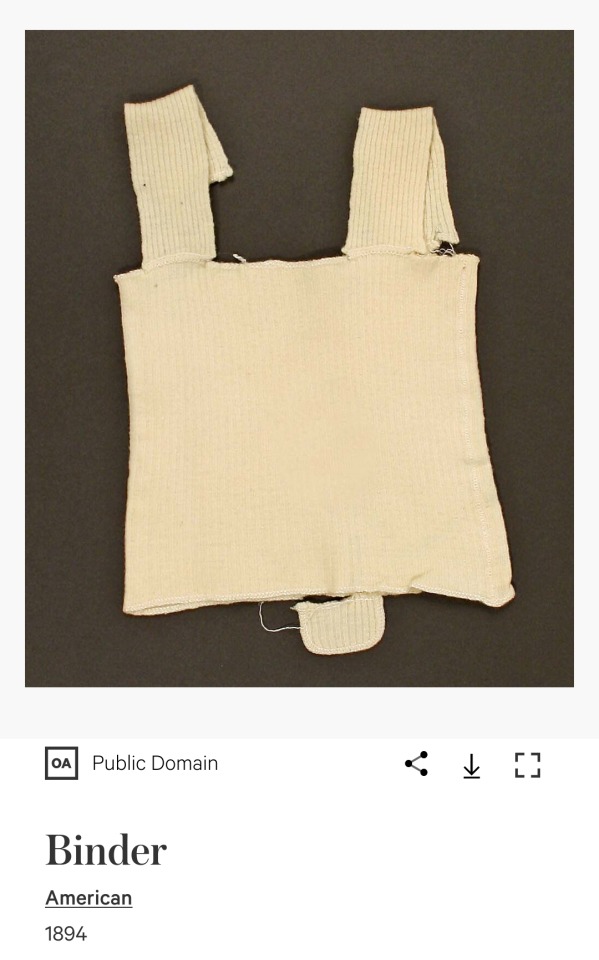
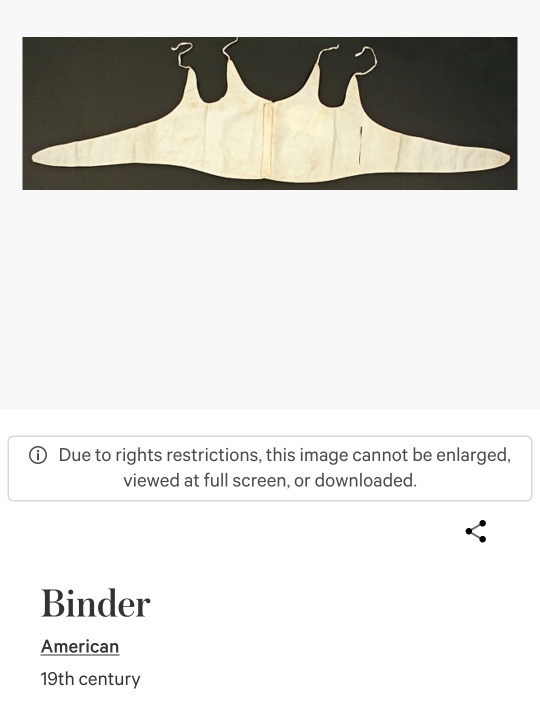
This is interesting!
They could actually be the types of binders you use. I immediately thought of 19th century male impersonators - female (?) actors who specialized in male roles in Vaudeville and other similar forms of theater, in which drag was integral part of, and would also have their own one man impersonation comedy and music shows and male stage personas. Basically they were drag kings. (Similarly female impersonators, basically drag queens, were also quite popular.) They were known to bind their chest, and other actors, who didn't necessarily do the impersonation shows, but played male roles on stage, would also often bind their chest for their performance. Here's for example two successful male impersonators, British Vesta Tilley (first picture) and American Ella Westner (second picture).

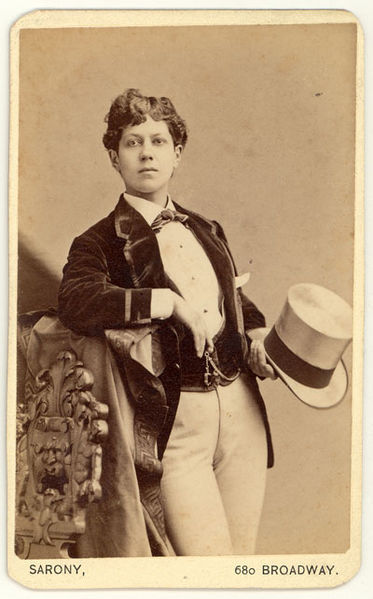

Queer women and trans masc people, who dressed in masculine clothing, (which was pretty common) also sometimes bound their chests, but unsurprisingly that was not exactly celebrated like drag performances were, so there weren't binders made for queer people specifically. I'm guessing they either made their own binders or used binders made for actors. Often those actors were the same people as those queer people, since drag performance was one of the few socially acceptable ways to fuck around with gender. Not all of them were queer, Vesta Tilley looks excellently queer in her drag, but outside stage she was respectable member of high society and very supportive of her husband who became conservative member of parliament (after she had retired). And I think we can easily imagine what kind of political opinions about queer people she was supporting when he was conservative in the context of 1923 Britain. But many of them were known to be queer, like Ella Westner, who eloped to Paris with a very interesting woman, Josie Mansfield (pictured in the last photo above), who was mistress to an infamous scammer and the man who murdered him. Westner was also buried in men's clothing by their own request.
I couldn't find pictures though what did the binders used for chest binding looked like, so I decided to look into what kind of other binders were used in the era. I think the first binder or perhaps both of them could be baby/infant binders (first two pictures below). Apparently people in Victorian era (and in 18th century) believed that chilled abdomen could cause cholera and I guess other bowel issues, so they treated cholera and tried to prevent it by wearing binders and belts (last picture), which could be also made from flannel or wool knit for extra warmth. And babies are quite vulnerable to bowel issues and cholera, so they made binders for babies too. I've seen many different types for these (for both baby and adult use) with some of them like cloth wraps, and some of them kinda corset looking though not corset shaped. If the binders you found were indeed for abdomen warming purposes, I'm sure they are for babies, since those for adults would be so low there definitely wouldn't be shoulder straps like that. The proportions on the first binder especially seem to me fitting for a baby, like the straps feel a bit too wide for adult scale. The second one is harder to guess, it could be a baby binder, but it seems to have boning in the middle, which would make maybe more sense in a chest binder?
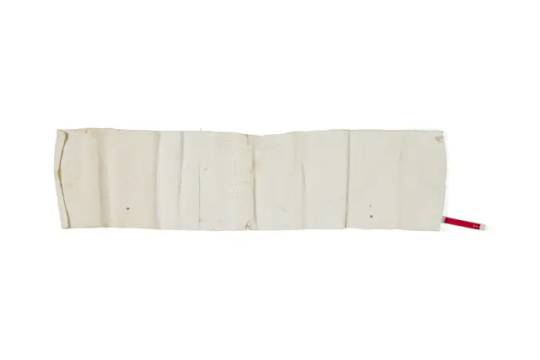


But yeah Victorian medicine continues to be... interesting.
#extant garment#historical fashion#fashion history#history#victorian fashion#queer history#undergarments#historical clothing#dress history#historical binder#photography#answers
98 notes
·
View notes
Text

Six Sentence Sunday
thanks for tagging me @run-for-chamo-miles @that-disabled-princess and @orange-peony!
classicstober 2024's prompts have been announced and i'm super excited because it's historical figures! my obsession with Roman non-fiction and biographies has finally paid off!
i thought it would be a good opportunity to jumpstart my writing brain by writing lots of short and snappy things. and so today, i've written 1000 or so words for Regina of South Shields, who i've had the pleasure of visiting!
i'm about to ramble, so i'm putting it under a cut. also warning, i've included photos of a tombstone and a human skeleton. if you just want to read the six sentences and not see them, scroll fast right to the bottom.
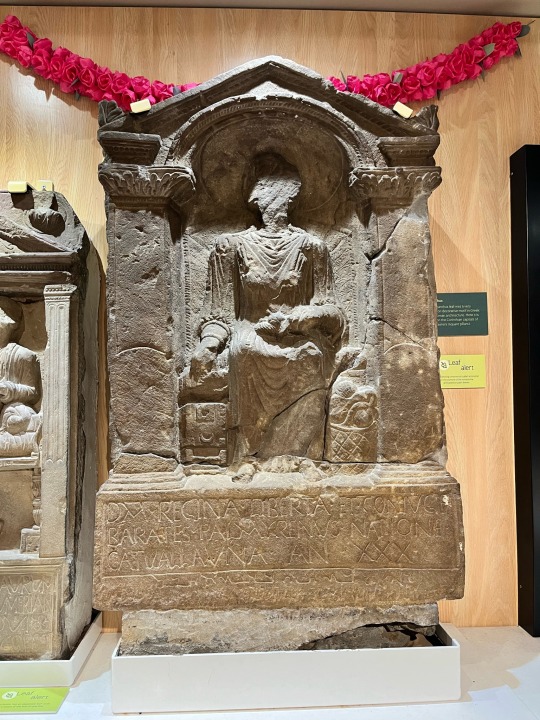
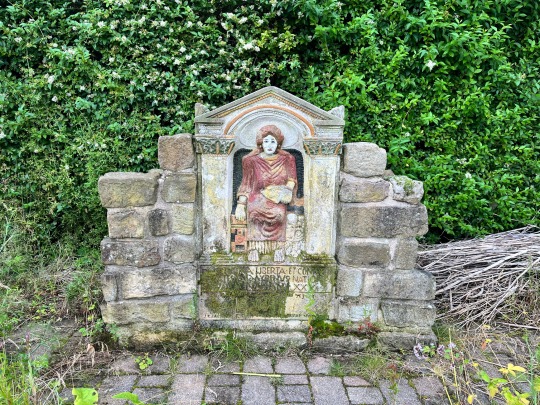
so, this is Regina. or rather, her tombstone, discovered by builders in 1878, and a reconstruction of how it might have looked when it was erected. if you haven't heard of her, which is understandable, she was a British woman from modern day St Albans (near London) during the Roman occupation of Britain. she was sold as a slave (did her family need money? was she born a slave? we don't know) and bought by a man named Barates, from Palmyra, a city in modern day Syria, who was either a soldier or at least travelling with the Roman army. they moved to a garrison close to Hadrian's Wall in what is now South Shields in the north east, and Barates fell in love with Regina. he freed her and they got married.
her tombstone is mostly important because it tells us that a Syrian man was in Britain during this time, and since her tombstone has Palmyrene script on it, and the chances he engraved his own wife's tombstone are slim, there was likely at least one other Syrian person who could engrave headstones around. which suggests that there was a whole group! the name of the Roman fort in South Shields was Arbeia, which could even mean "the place of the arabs."
it's estimated that a third of people in Britain during the Roman occupation were long distance migrants, and most were not slaves, as is often assumed. Ivory Bangle Lady, who I have also visited in York Museum and who lived around the same time, is believed to have come from Africa. and she was a wealthy free woman!
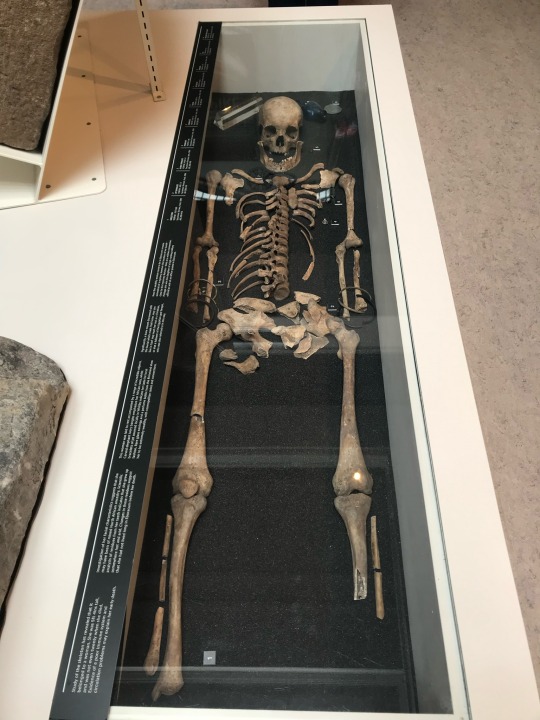
but what about Regina? well, we know she was from the Catuvellauni tribe, and that she died aged 30. we can assume she spun wool as she's depicted doing so on the tombstone, which was a respectable pastime for Roman women, and she's shown wearing lots of jewellery, so she probably led a comfortable life.
but we don't know how she felt about her marriage, as her tombstone is in Barates' words. did she love him back, or was she under duress to marry him to improve her own prospects? did they have children? did she have friends in Arbeia? did she have to learn Aramaic or Latin to communicate with Barates, or did he know Celtic? we simply don't know. so much of her personality has been lost to time.
so my challenge was to write something that pieces together various possibilities to create what could be an approximation of who Regina was. to give her some life, a voice, and at least a bit of agency.
okay. enough preamble. here's six lines:
I had grown and reached my twentieth year, and as the dark circles beneath my eyes disappeared and the warmer months led me to abandon my woollen cloak, I noticed men's behaviour towards me change. I am not the type to play at being coy- I knew they found me attractive. With my white skin, red hair, and pale blue eyes, I was exotic to them. I stood out.
I noticed Barates' behaviour change too. I realised I had a choice to make.
if you want to know more about Regina, my main source is this podcast by Mary Beard, but i also took inspiration from the book Roman Woman by Lindsay Allason-Jones.
tags: @forabeatofadrum @j-nipper-95 @artsyunderstudy @prettygoododds @confused-bi-queer @imagineacoolusername @ic3-que3n @aristocratic-otter @larkral @hushed-chorus @ivelovedhimthroughworse @shemakesmeforget @fatalfangirl @ebbpettier @you-remind-me-of-the-babe @cutestkilla @youarenevertooold @alexalexinii @shrekgogurt @bookish-bogwitch @thewholelemon @supercutedinosaurs @shutup-andletme-go @theearlgreymage @ileadacharmedlife @alleycat0306 @carryonsimoncarryonbaz @comesitintheclover @noblecorgi @roomwithanopenfire and @blackberrysummerblog
28 notes
·
View notes
Note
hi, sorry to pop in like this. i've followed you for a while and i was intrigued by your mota posting, so when i was on an airplane recently i watched the first three episodes on the free in-flight service, and... first off THANK YOU for that. i have now finished the whole series and fucking loved it??
anyway, second off--i hope this isn't too awkward but i was hoping i could ask a million questions about like...... what your experience is writing fic and how you tag things and approach the historical aspects etc? i've just started poking around at the ao3 tag but i'm getting fic ideas and i'm not sure how to go about the tagging/writing/etc
(either way, i'm excited to dive into your fics because some of these are 👀👀👀)
HELLO I LOE YOU WELCOME TO DEAD GAY PILOTS!!!!!!!
First and foremost, I would recommend following @hogans-heroes who knows all things plane and has written up some good info on how they work. And also pilots in general
@thatsrightice has a TON of good research done about the irl boys as well
And in general check out the tag for all our lovely lovely writes there's so many to name.
For meeee i think the HboWar fandom understands the separation from the real guys and the fictionalized versions we play dolls with. Some people will put disclaimers but not all. Generally you're not going to piss anyone off by exploring them through a queer lense so long as nobody's harassing the real family members (really only find them in the FB groups. @bcolfanfic has had some sweet exchanges with the Egan and Crosby family)
In terms of researching, my kind of separation from the real people is that I only take show canon as fact. Anything not included in the show about the real guys I don't follow. That's what feels respectful of me! But there's so many lovely writers out there who do follow the events of their real lives and such good content for 'canon' fic.
In terms of researching Google is my best friend as well as the historians we have in the fandom. (Hogans-Heroes again is a gem. @reallylilyreally has a great attention to detail and we also have a few current/former service members who family of service members who are good points of reference!)
In terms of other research. the Masters of the Air book is a great go to
Cros actually wrote a book called A Wing and a Prayer which is a great resource and also pretty heartbreaking!
I personally referenced The Evening Crowd at Kirmsers by Ricardo Brown for queer underground culture in the 40's
Coming Out Under Fire is a fucking devastating but really helpful book about gay service members in the 40's and kind of the danger they were in. @bcolfanfic also has some excerpts from that she posted a while back if you don't mind digging.
I've also used ancestry.com to research the guys as well as these websites contains the personnel and mission files as well as photos of the guys!
https://100thbg.com/ you can search both the guys AND the planes!
another great website with a similar search function but they have a few diff documents.
For tagging the main tags are: Mota, Clegan and Hbowar (this one will include the other shows like Band of Brothers, The Pacific, and Generation Kill)
Really it's treated like any other fandom. Everyone understands that we're playing with dolls, not real people. But also RPF is fine kill the cop in your head and join the hockey rpf fandom next >:)
14 notes
·
View notes
Photo
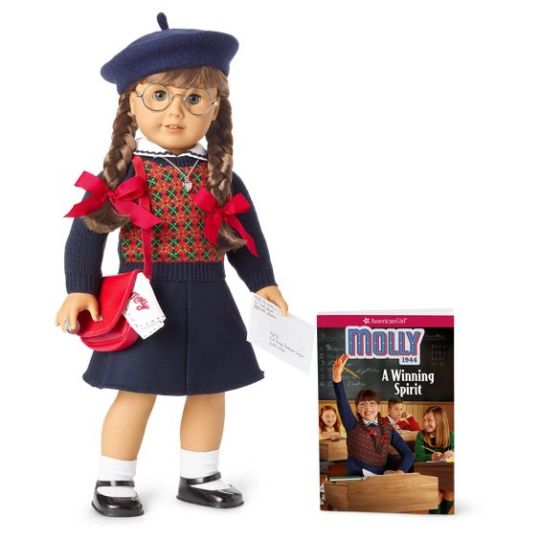
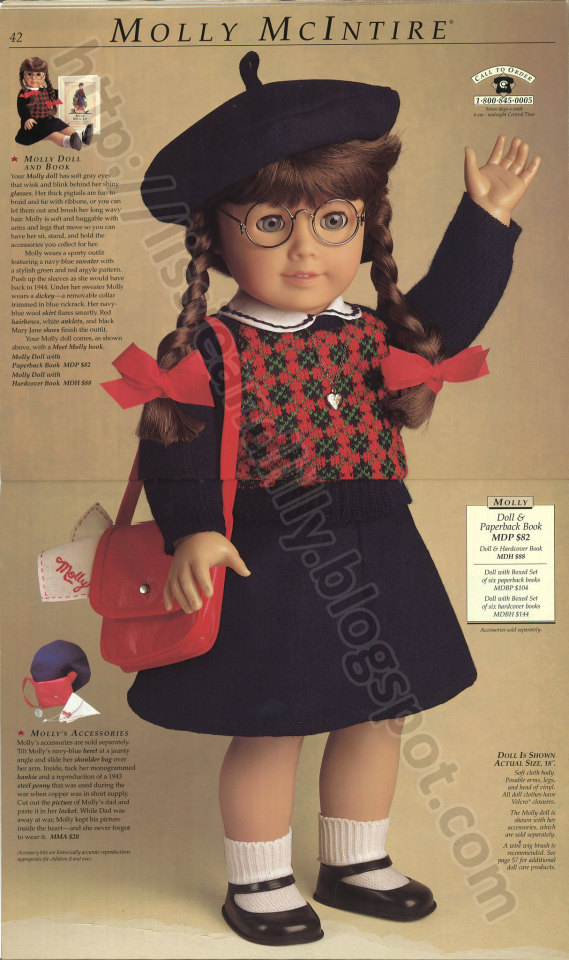
Apparently, Molly is low-key a major gay icon, and honestly, I get it. After all, Molly did *really* like her pretty teacher, Miss Campbell. If you think about it, it makes sense that lot of future lesbians would absolutely love Molly. Most dolls in the 90s were hyper-feminine princess dolls, and Molly was... not. I’d imagine the market for girls who want to play with dolls that aren’t pretty pink princesses is pretty large and the supply is pretty small. Just like there’s plenty of boys out there who want to play with something other than GI Joes. Molly (and AG in general) fits neatly into that market, which I’m sure is why she was so successful.
Last year, with its re-launch of the classic dolls, AG put a post on it’s instagram, “To all the Molly girls in the world, we see you and celebrate you,” which a lot of folks on Twitter took to see as confirmation that Molly was gay. When asked if they just outed Molly, AG gave a very non-committal reply. AG has always had a distinctly feminist slant, but it’s only ever toed the line of actually being LGBT inclusive. So far the only actual inclusion we’ve seen from them is a Girl of the Year with a pair of gay aunts. Even that tiny whiff of queerness was enough to set off a frothing horde of angry conservative moms screaming for a boycott. Since Mattell is only motivated by profit, I doubt we’ll get more representation any time soon, but we can dream.
Anyway, World War II was pretty gay to begin with.
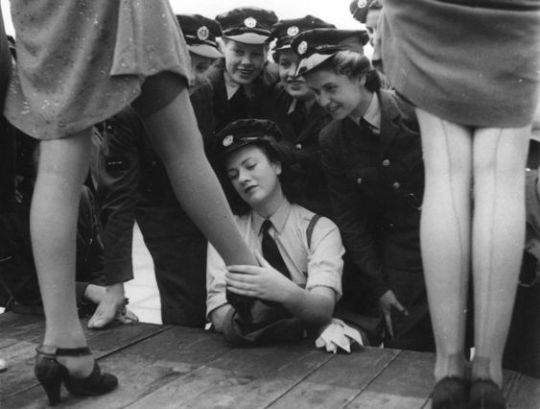

A lot of historians point to WW2 as the starting point of the modern gay rights movement because before it, you had very many people living on isolated farms and never going very far from home in their lifetimes. With mass recruitment of men into the military, gay servicemen were able to find other men like themselves and build a community. It was much the same way for women who went to work in factories, joined the WAC or WAVES, and joined women’s baseball leagues. That’s right, the league of their own was gay as FUCK.
As far as Molly’s fashion goes, I love her lack of pink. I’m glad there’s a doll out there that isn’t hyper-gendered, and I wish there were more dolls like her out there.
With sweaters coming into fashion in the 1920s and 30s, the sweaters of the 40s started to see more complex and colorful knits coming into style.
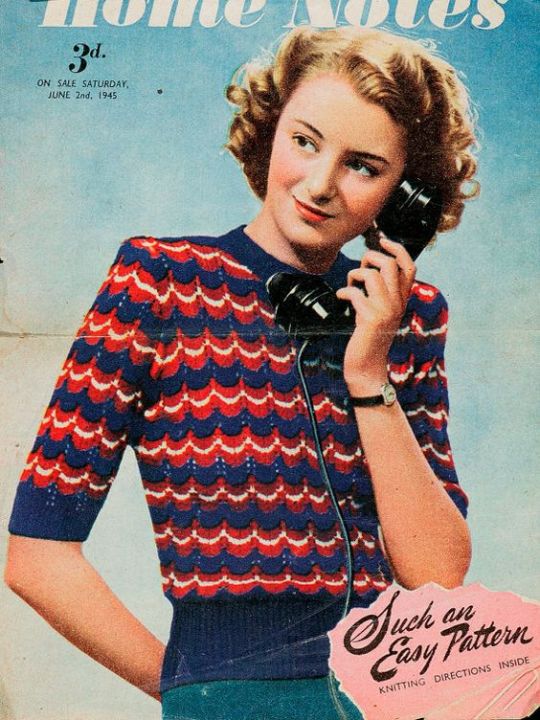
Much of the fashion of this era was dominated by frugality. Europe’s couture houses were shut down, and fabric was rationed. Hems were shortened and baggy cuts and useless frills were done away with. Britain introduced the “Utility Scheme” which hired designers to make chic ensembles using as few resources as possible. Because of this, separates and outfits that could be made with scraps of fabric were very popular, and at-home knitting and sewing continued to be highly popular.
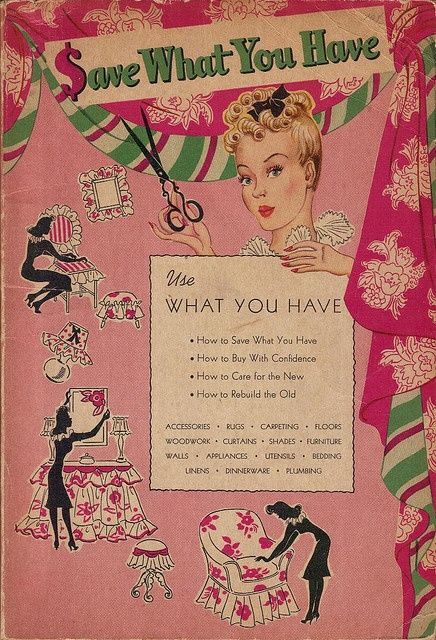

“After the United States entered World War II in 1941, companies began to experiment with various materials in anticipation of rationing and shortages. This example is a prototype from Nina-Fay Foundations, which uses plastic for closures and stays instead of the usual metal. Although metal was not ultimately rationed, the company was experimenting with alternatives to metal zippers and hooks in the event that it was needed for the war effort.”
(The Met Museum)
Women were taking men’s jobs and taking on masculine roles
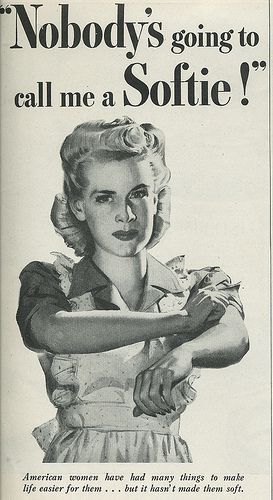
But they were still expected to maintain a certain level of femininity, “To give our boys something to fight for.”
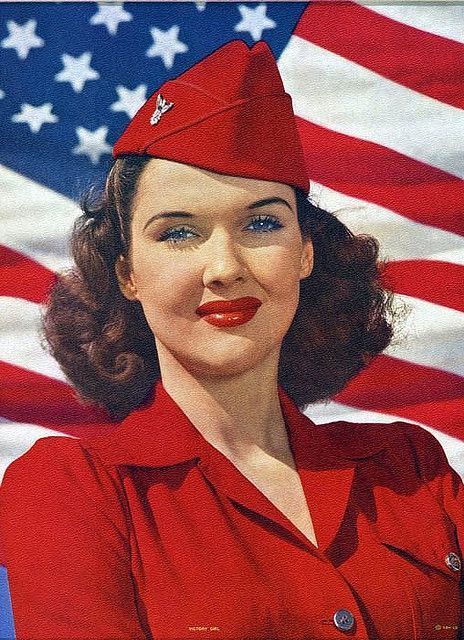
Because of all of this, the gender politics of the 1940s are really complicated and interesting.
301 notes
·
View notes
Text
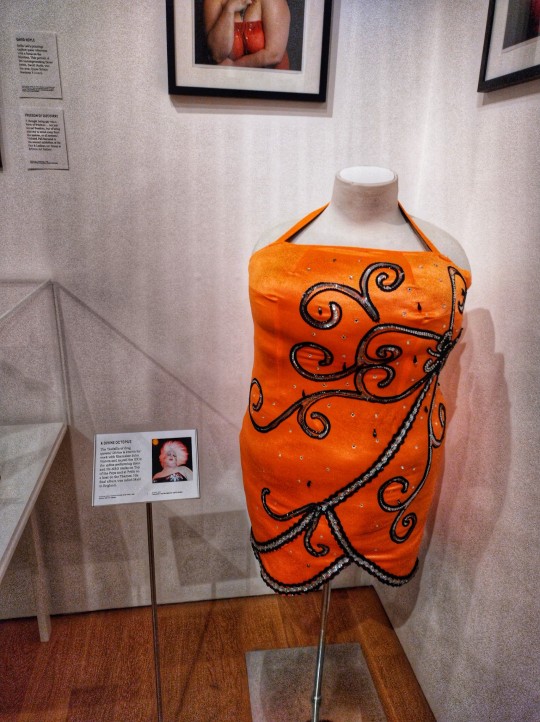
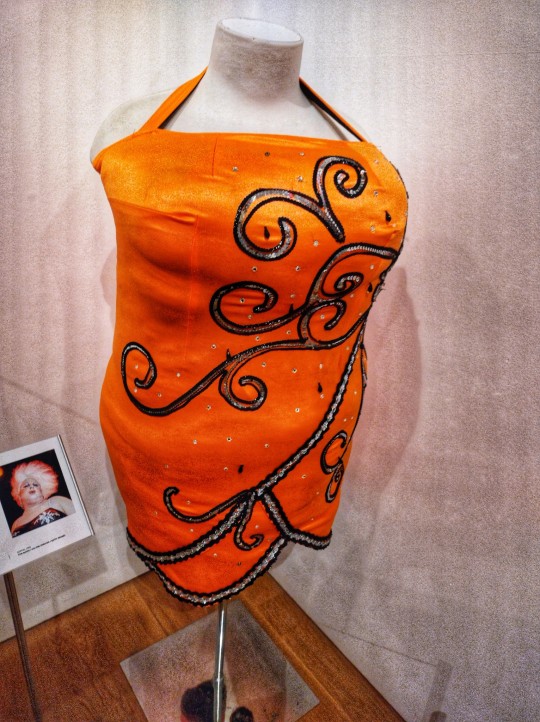


divine's octopus dress from the 1985 uk tour at the queer britain museum, london
#divine#harris glenn milstead#drag queen#john waters#camp#kitsch#queer britain#london#u can reblog#IM SORRY IM OBSESSED WITH THIS
342 notes
·
View notes
Text
thought I might add a little to a question unanswered by the video essay: the why?
not as an excuse, not a full explanation either because there's still the matter of the Telos money.
but why does a man live, breath and eat for his channel/career without the passion for researching and learning?
I can tell you that he truly *did* devote his entire time and energy to producing videos and engaging with the commentariat as a full time job, though if the video scripts were copy paste. He probably feels like he's devoted his entire soul for years into this project and the copy paste was "just" to keep up with the youtube once a week upload demands.
IMHO, what we have is a bloke with crippling anxiety, loneliness and body dysmorphia with a pathological fear of rejection who attempted to build an online queer community that wouldn't ever let him down. As far i can can tell he barely left the house, didn't date and i started to wonder if he really had moved when he wasn't visiting any of Toronto's very gay friendly places or even some of the museums and libraries, wasn't making any local connexions even when people reached out. Instead, he spent his weekends chatting online (often on livestream) about gay media, business, youtube and film making.
I think he could have built that safe haven if he'd kept the day job, produced a fully credited video once a month which was in the format of let's watch this documentary, let's read this book, let's dive into a topic and read the various articles followed by his livestream chats. There is clearly an audience eager for it.
and that's where it gets uncomfortable, right? the lines blur between shyness + not wanting to be hurt vs not collaborating and not being part of other established groups. Canada not only has multiple gay filmmaking scenes, advocacy groups and even a whole bunch of Canadian queer youtubers. They don't have to all get along, because there's more than just the Canada based breadtube, there are a lot of smaller channels that'd love the opportunity to network.
Anyway, it was during a live that i bought up some local Canadian networking opportunity, he backed off quite hard in a way that felt like a little bit more than anxiety about the fierce competition that goes on for such stuff. It felt vaguely like Little Britain's "The Only Gay in the Village" but mostly I was reminded of folks in my life who decided to forge their own paths in charity work and activism, specifically the very dodgy intersection between missionary work and charity and charities that are about the joy of bringing fish to the hungry instead of helping the locals who know how to fish get the new motor for their boat. It's actually a really complex and nuanced conversation where sometimes the least colonialist choice is to hold your nose and work with the local catholic church - yeah I know, that level of complicated, here's some reading before I start on the importance of translating books to creoles being a better investment than teaching english to match an english curriculum and how relief work is often predatory business opportunities and how secularism is a tightrope balancing act and don't get me started.
It is possible to walk and chew gum and listen to music at the same time. We can talk about how plagiarism is bad, how the algorithm rewards it, how this guy is probably getting more ire than the right wing grifters also brought up, why left tube maybe feels a lil intimidating, why people build their own little digital or offline communes, how being an educator and being a thought leader get smooshed together in an attention economy that wants to create influencers with a parasocial engagement with folks that want personal guidance, sometimes stolen valour/plagiarism/fake cancer is for power and clout and sometimes it's a maladaptive response to a desperate loneliness I hope I never fully comprehend.
21 notes
·
View notes
Text
Stats 2: Electric Boogaloo
Our 256 works are comprised of.... 132 paintings, 36 drawings / digital artworks / comics, 26 installation pieces, 20 sculptures, 11 buildings, 11 public artworks, 10 photographs, 4 prints, 3 cave arts, 2 textile arts, and 1 thing I classified as a collage instead of anything else!
More stats below!
Most popular city: New York, with 13 pieces, followed by Paris with 8, and Chicago is third with 7! Washington DC has 6, Florence, Madrid, and London all have 5, Philadelphia has 4, Dublin, Edinburgh, Mexico City each have three, and all the following cities have two: Boston, Cairo, Calgary, Cordoba, Helsinki, Houston, Jerusalem, Los Angeles, Munich, Ottawa, Prague, Vienna, Warsaw
Most popular museum: somehow the Art Institute of Chicago has the most with 6 pieces! Followed by the Museum of Modern Art with 5 pieces! The Museo del Prado has 4, the Philadelphia Museum of Art has 3, and the Ateneum, Louvre, Metropolitan Museum of Art, Museo Dolores Olmedo, National Gallery of Canada, Solomon R. Guggenheim Museum, Tate Britain, Tretyakov Gallery, and the Uffizi Gallery each have 2! In addition, the single works are spread out amongst 16 city level galleries (ie the Phoenix Art Museum), 5 state/provincial (ie Queensland Art Gallery), 25 national (ie National Gallery Prague), 8 museums named after benefactors (ie the Hirshhorn Museum), 7 museums dedicated to a specific artist (ie the Van Gogh Museum) and numerous other institutions! Churches, palaces, increasingly specific museums, museums that are named after their location rather than their governmental level... and of course a whole lot of private collections and pieces we were unable to find the location of!
Countries! 50 pieces are in the US! 13 in France! 12 in Spain! 7 in England, 6 in Canada and Italy, 5 in Russia, 4 in Ireland, Mexico, and Australia, 3 each in Germany, Austria, and Scotland, and 2 each in China, the Netherlands, Israel, Finland, Wales, Poland, Japan, Egypt, and India, and 1 each in Portugal, Ecuador, Thailand, Singapore, Belgium, Argentina, Sweden, the Czech Republic, Norway, Bangladesh, Saudi Arabia, and the Vatican!
Demographics! I revoked John Singer Sargents American status for these because he was born in Europe, and spent most of his life travelling around Europe. I tried my best to track down the correct numbers but honestly some of these are likely to be slightly off. I went with easily publicly available information like Wikipedia and where that failed the author's website. I also tracked people's birth countries in addition to where they lived / worked for most of their lives. Anyway! We have 74 pieces by American artists! 27 French, 22 English, 14 Russian, 13 Spanish, 11 Canadian, 9 Italian, 8 Chinese, 8 German, 6 Irish, 6 Polish, 6 Mexican, 5 Greek (four of those are Ancient Greece), 5 Ukrainian, 5 Japanese, 4 Australian, 4 Belgian, 4 Indian, 3 Serbian, 3 Armenian, 3 Dutch, 3 Austria, 3 Latvian, 3 Swedish, 2 each from Finland, Scotland, Malaysia, Cuba, the Czech Republic, and Norway, and one each from Israel (specifically), Portugal, Ecuador, Thailand, Switzerland, Denmark, Iran, Colombia, Chile, Estonia, and Egypt (albeit Ancient Egypt)
Including the one Israeli artist, we have 7 Jewish artists represented, as well as 4 Black, 6 Indigenous (one is half Kichwa, one is Sami, one is Haida, one is Ojibwe, and two are Australian Aboriginals. One of those is Kokatha and Nukunu, and the other one was a group project with eight artists who did the majority of the work, and 6 of those are from Erub Island but the articles did not specify further except that at least one of the eight is non-Indigenous), 1 Chicana, and 1 Asian-American (which I am specifying because I felt very stupid adding tallies to an Asian column when I already said there are 8 Chinese artists and 5 Japanese and 2 Malaysians and....). We also do have 16 artists that publicly identify as queer in some fashion! I have listed 9 works by gay men, 2 works by lesbians, and 5 that have chosen to use "queer" instead of other labels.
And on that note.... we have 155 works by men, 51 by women, and 2 by nonbinary artists!
Most represented artists! Frida Kahlo and René Magritte tied with four works each! Félix González-Torres, Francisco Goya, John Singer Sargent each have three! And the artists that have 2 artworks each are... Claude Monet, Dragan Bibin, Edmund Blair Leighton, Francisco de Zurbarán, Gustav Klimt, Holly Warburton, Hugo Simberg, Ilya Repin, Ivan Aivazovsky, Jacques-Louis David, Jenny Holzer, Louis Wain, Pablo Picasso, Sun Yuan & Peng Yu, Victo Ngai, Vincent van Gogh, Pierre-Auguste Renoir, and Leonardo da Vinci (although the second is debated attribution)! That means that 205 of the works are not by any of the above! Some have unknown artists (we've got THREE CAVE ARTS) but most are just... really varied!
And lastly, years painted (as sorted by year finished and not year started). Who else loves when something is listed as "13th century"?? Not me, that's who. This is going to be a lot of numbers, and there's no real way to make it more readable. so..... feel free to skip!
The oldest two submissions are from circa 40,000 years before present, and 30 to 32 thousand years before present! Six more artworks came to exist before 0 (CE or AD depending on who you're talking to), and 7 before 1000! 2 from the 1200s, 6 from the 1400s, 8 from the 1500s, 3 from the 1600s, and 5 from the 1700s! Several of those already listed were started in a previous ....age category (for instance, one has no specified date other than 7300 BC to 700 AD) but once we hit 1600, everything is usually finished in a relatively short timespan. 6 are from 1800-1850, 9 from 1850-1880, and the 1880s are extremely busy. 1 from 1881, 3 from 1882, 1 from 1883-1885, 5 from 1886, and two each from the next four years (1887-1890)! 6 from 1891-1895, and 5 from 1896-1900!
We've got 3 from 1901 or 1902, 4 from 1903, two each from 1906 and 1907, and one each from 1908 and 1909! 3 from 1910-1915, 3 from 1917, 2 from 1918 and one from 1919! 6 are from the Roaring Twenties, three of them specifically from 1928! 4 from 1931-1935, and only 3 from the latter half of the 30s! There's 3 from WWII, and 4 from 1946-1949, 5 from 1951-1954 but only 3 from '55-'59. 5 from the sixties, 7 spread out through the 70s, and 10 from the 80s, two each from 81, 82 and 84. The 90s have a lot of duplicate and triplicate years, totaling 20 overall! 11 are from 90-95, the other 9 are 96-99. 7 from 2001-2005, and 8 from 2006-2009. 9 from 2010-2014, 3 from 2015, 6 from 2016, 5 from 2017, 1 from 2018, 3 from 2019, 5 from 2020, 1 from 2021, 4 from 2022, 11 from 2023, and 3 ongoing projects! Whew! If anyone wants it listed By Year instead of in groups like this, that'll be most readable in like... list form and that's way too long for a stats post.
Congrats on making it to the end! If you got this far, uh, let me know if you want to see the spreadsheet after the tournament, I guess. I'm very proud of it.
50 notes
·
View notes
Text
ok yay finally planned out some kind of plan for tomorrow
1- Soane museum (seems real cool! also open earliest and easy access route)
2A- down to courtauld gallery (some very cool paintings there but Does cost)
2B- back up to gays the word (bookshop) then on to grant museum, then queer britain
3- idk something else based on how long and tiring this all is
i have ideas for sunday but im gonna see how i get on tomorrow i think!
#i could technically go to gays the word any time but it also makes sense to do specifically then bc its an easy tube#between holborn & russell square (literally 1 stop) but also seems to make the walk to grant museum easier#idk!#probably some kinks to work out#nyxtalks#sorry to talk foreverrrrrr but. thats me#im undecided on courtauld in general but esp for tomorrow. but also kinda a pain if im not already in the area#but £10.... buuuut. monet & van gogh and just. im way into impressionism these days apparently#(should i be posting a somewhat detailed plan of my day? probably not! but if you wanna stalk me join the line buddy!)
3 notes
·
View notes
Note
Quick question, but where would you suggest to start researching? I’ve never really done it before, but I want to, but I’m worried I wouldn’t get a reliable resource and only realize it later. Any suggestions?
So Im gonna guess this is gonna refer to historical events and such (bc I mentioned that), BUT I think it can be applied to most research? This is how I go about it!
First, wikipedia article! Obviously they have the sources that you can dig through, but I use it to skim over the general idea (like if it's a war or a type of fashion), and make notes on what I want to focus on. Earlier I was researching how the Ottoman Empire was split up by France and Britain after WWI, and the interesting/turbulent decades of Syria as an independent state following the fall - that's A LOT of complicated shit to go through. So, from there I make a list of what's most interesting to me.
(This may be tough depending on how broad your subject is! "American Civil War" is really broad so maybe pick a very specific aspect that's interesting you the most. The battles? How a specific part of the US was affected? The history of black Northern soldiers vs Southern soldiers? etc etc)
Narrow it down - from "History of the Ottoman Empire", focus on "Post-WW1 Fall of Ottoman Empire and Creation of Turkey" and then what events, documents and people were important to that? Pick like two from each category. More examples - I love queer history, but maybe I want to focus on Queer terminology from 1920-1960. Narrow it down further - "Queer Slang from the 1920s", "History of Queer Clubs In the 1920s", "History of Queer Clubs in Harlem in the 1920s", "and so forth.
I google and use credited websites; it's great when you find the website of a museum that specializes in that or a special article put out. Sometimes what I need is so specific that I'm digging through any link I can find. Again, that gives me more details, but like you said, is it reliable? And even if these articles or websites can get detailed, it may not be exactly what you want.
So! Depending on how deep you wanna get. I love love love non-fiction and if I'm really passionate about the subject, I look into non-fiction books that audible or my library might have. Audiobooks work best for me personally. Auto-biographies are fantastic as well. And if the book has several revised editions, you can be sure it's regularly updated and accurate (usually), as well as check for reviews on the accuracy of the book and author.
Also, documentaries! I went on a kick about the rise of nursing as a proper profession in France from 1900-1950 - very specific! - and Netflix actually had a French-made documentary with english subtitles about it. So interesting! You can find documentaries online and on Youtube. Sometimes Youtube has really interesting videos, and if you're lucky you can get a deep-dive on your chosen subject... but most of the time it's just a 10~20 minute overview video (avoid the videos that are like, "History of This Complex Historical Event or History of X Country in 1-3 Minutes", just. Trash.) Sometimes I get a video that a museum made; they aren't the best production quality but you can tell they're very passionate.
Oh! And ofc Im focusing on historical things, but I also looove to research fashion for specific decades in the US. That's fun because there's quite a few websites where you can get lots of photos of what every day people wore, what was high fashion, esp if it's after the 1900s! Vintage Dancer is one of my favorite websites for the sheer detail of 1920s fashion, with descriptions and photographs.
By this point you probably have a lot of notes and things to cross-reference! So if you get a feeling that something may not be correct or biased, ideally you'll have multiple sources (docs, videos, books) etc to pull from. Again when I'm very serious about a subject I really prefer non-fiction books because they're (supposed to be) rigorously researched and the authors typically spent years on them. I think Youtube and Wikipedia is like your start, documentaries and specific websites/blogs are the middle, and tons of non-fiction or going out to do your own research (look for local museums, ask librarians, etc) is getting deeeeep in that rabbit hole! It's all so interesting and very very fun and just. Gah. I love how terrible and fascinating history is.
#im working on a Lackadaisy Thing (tm) so im back into the 20s research i did for Peaky Blinders stuff#but more intense bc it's US-based#so easier for me to find stuff bc thats where I live!#anyway good luck anon! !!#I hope this made sense Im v sleepy from work haha#not writing#libra says
18 notes
·
View notes